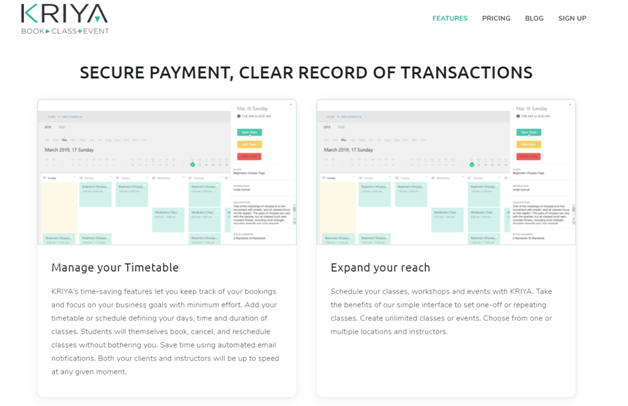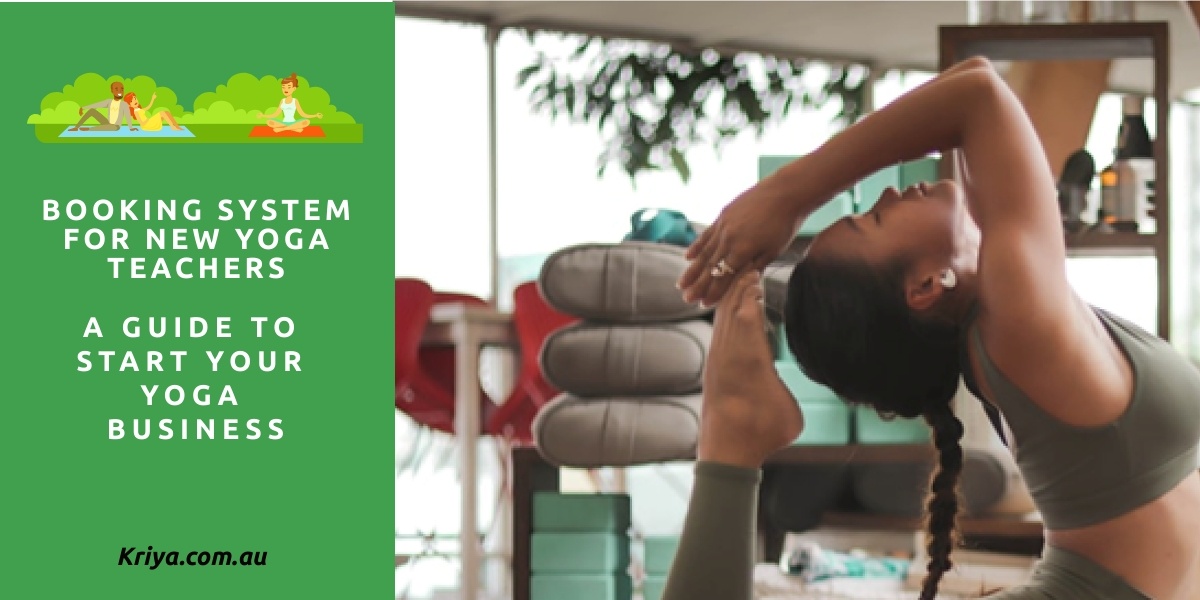
Booking System For New Yoga Teachers – A Guide To Start Your Yoga Business
New yoga teachers are eager to launch their own yoga businesses. I recently met a few new yoga teachers who are keen to start their yoga classes and are seeking a dedicated yoga space. Starting your yoga business is not a hefty task if you have confidence and trust in yourself.
Additionally, you need to be familiar with the tools and techniques that you may require to grow your yoga business. Here, for those new yoga teachers who want their dream project to come true, you will find a complete guide to starting your yoga business.
1. Get Certified with a reputable Yoga Teacher Training (YTT)
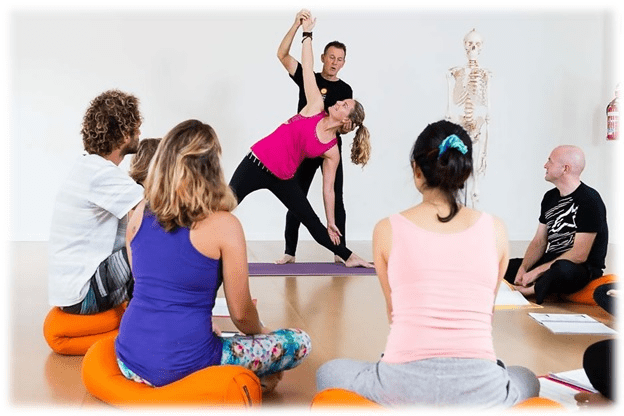
Before becoming a yoga teacher, you need to be adequately trained in the field of yoga. This is the first step for anyone who wants to become a yoga teacher.
To teach yoga in Australia, you will first need to complete a 200- or 500-hour yoga Teacher Training from a registered yoga school (RYT). There are course options accredited by reputable yoga schools, such as Yoga Alliance and Yoga Australia, which will provide you with the certification to teach.
For those aspiring teachers who want to explore deep in yoga, especially if they’re going to teach meditation or spiritual practices, or even Hatha Yoga, Iyengar Yoga, and Vinayasa Yoga, they can also take a step further to go to the roots of Yoga and venture to India to experience this most excellent knowledge of ancient times.
Here Are the Best Recommendations For 500 YTT Or 200 YTT For New Teachers in Australia.
2. Get Insurance
Now that you are trained in your subject and want to start your yoga business, the critical concern is how you will protect yourself. Suppose any untoward incident happens while taking a yoga class, or you incur a loss in business, you need coverage and protection for yourself and your business.
Even if you are taking an online yoga class or live-streaming a yoga class, you need insurance.
What insurance do you need?
You need a professional Indemnity Insurance. All Yoga professionals need to ensure they are protected against unfounded allegations as well as breaches of professional duty. A Professional Indemnity insurance policy safeguards you and your business by providing cover against such claims, including the cost of defending the action, so you can conduct your business with the confidence that both your assets and your reputation are protected.
A general liability insurance will also protect you against any third-party claims for injury or property damage, and a professional liability insurance will protect you against any claims that your instruction or posture correction resulted in injury.
Discover what is covered in a professional indemnity insurance policy.
If you are teaching yoga online, then you need Social Media and Cyber Liability Insurance. Social Media Liability refers to claims for libel, slander, harassment, invasions of privacy, violations of intellectual property rights, and improper employment practices resulting from the use of social media sites, including Facebook, Instagram, Twitter, YouTube, and blogs.
Click here to find more about Social Media and Cyber Liability Insurance and how to get it.
3. First Aid Training Course Certificate
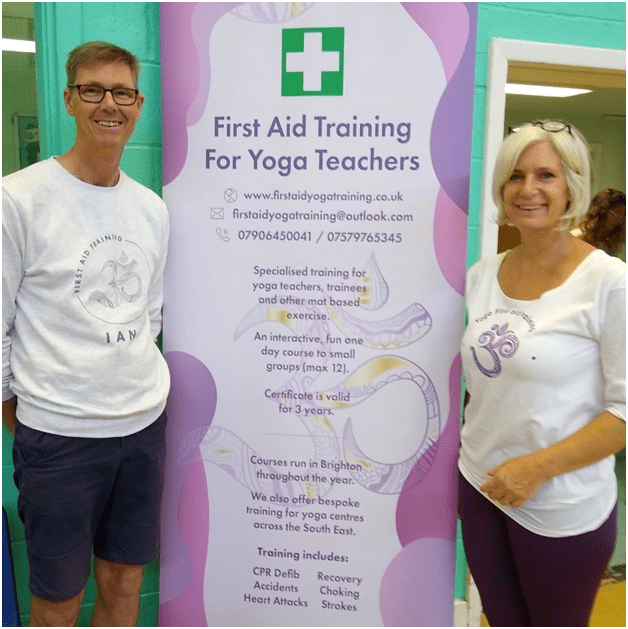
All is going well so far, but there is another critical step for a new yoga teacher to follow before setting up a yoga business. That is a First Aid Training Course Certificate.
First Aid training is an essential component for yoga teachers in Australia and a mandatory requirement for all yoga teachers. The First Aid Course covers how to respond to accidents and emergencies that may occur in a low-risk environment.
You need this course to protect your students and yourself. Training is available from basic CPR to emergency first aid, and a comprehensive first aid training programme that also includes the use of an AED unit, providing an introduction to how these lifesaving machines work.
The first aid training course covers Health and safety (first aid) regulations, Managing an incident, Treatment of an unresponsive casualty, Resuscitation (including the use of a defibrillator), Shock, Burns, Seizures, Stroke, Bleeding (including grazes, nose-bleeds and minor wounds), Common Yoga Studio injuries and others.
Yoga Institute Australia runs this six-hour course. Click here to enrol now.
Additionally, you can book your seat for this course at Yoga Australia.
4. Register With Professional Bodies Or Associations
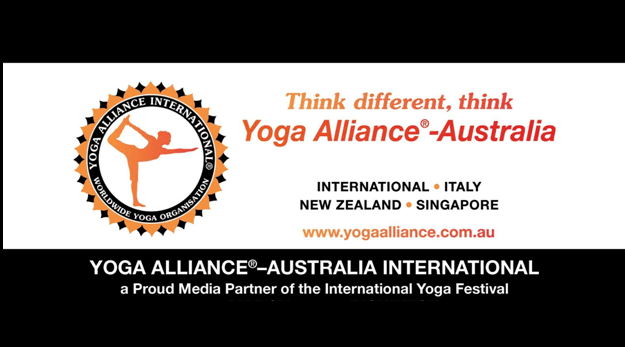
Additionally, you must register with professional bodies or associations. To become a successful yoga teacher and to grow your business, you need to become a member of an association or a group. Such associations are called professional associations, which are groups or organisations acting as a peak body or umbrella for professionals working in the same or similar fields.
These associations can define the yoga profession and help members further the profession through ongoing learning, quality control, and research. They also strive to uphold standards within their discipline, offer continuing professional development to their members, and advocate for the interests of their members to the government and the community.
In Australia, there are three such famous organisations that you can join:
You can visit these associations online to learn more about an industry or occupation. Services offered to members vary, but they generally provide a forum for members working in the same or similar fields to interact with and learn from each other. You can also find yoga teacher training modules, vacancies, information on professional registration requirements, and other yoga-related resources.
5. Booking System For New Yoga Teachers
Once you’re ready to begin teaching, the next step is choosing a reliable booking system to help you manage your classes and student bookings. Whether you’re teaching at a studio, online via Zoom, or running classes in a park, a user-friendly booking platform can simplify scheduling, payments, and communication.
As a new yoga teacher, it’s important to choose a system that works in your local currency, doesn’t require a large upfront investment, and offers ongoing support. Below are three top booking platforms popular among new yoga teachers in Australia:
KRIYA
KRIYA is an Australian-based booking system designed for yoga, Pilates, and wellness professionals. It’s affordable, easy to use, and integrates with platforms like Zoom, Skype, Google Meet, and YouTube Live.
Ideal for new teachers and small studios, KRIYA includes class scheduling, client management, payments via Stripe, and the option to create your own booking page. What sets it apart is its simple interface and responsive local support.
Learn more about KRIYA Booking System
Acuity Scheduling
Acuity Scheduling is a flexible and user-friendly platform used by individual professionals and small businesses globally. It offers calendar syncing, custom intake forms, automated reminders, and supports class-based bookings as well as 1:1 appointments.
It integrates with tools like Zoom, Google Calendar, and Stripe, making it a strong option if you want an international platform with a polished feel.
Momence
Momence is a newer platform that has quickly gained popularity in the wellness space. It supports live and on-demand classes, automated emails and SMS, and even lets you offer memberships and digital content—all in one place.
It’s well-suited for teachers looking to combine in-person and online offerings, with strong features for marketing automation, branded mobile apps, and instructor tracking.
Tip: Most platforms offer a free trial, so test a few and see which one fits your workflow and budget best.

